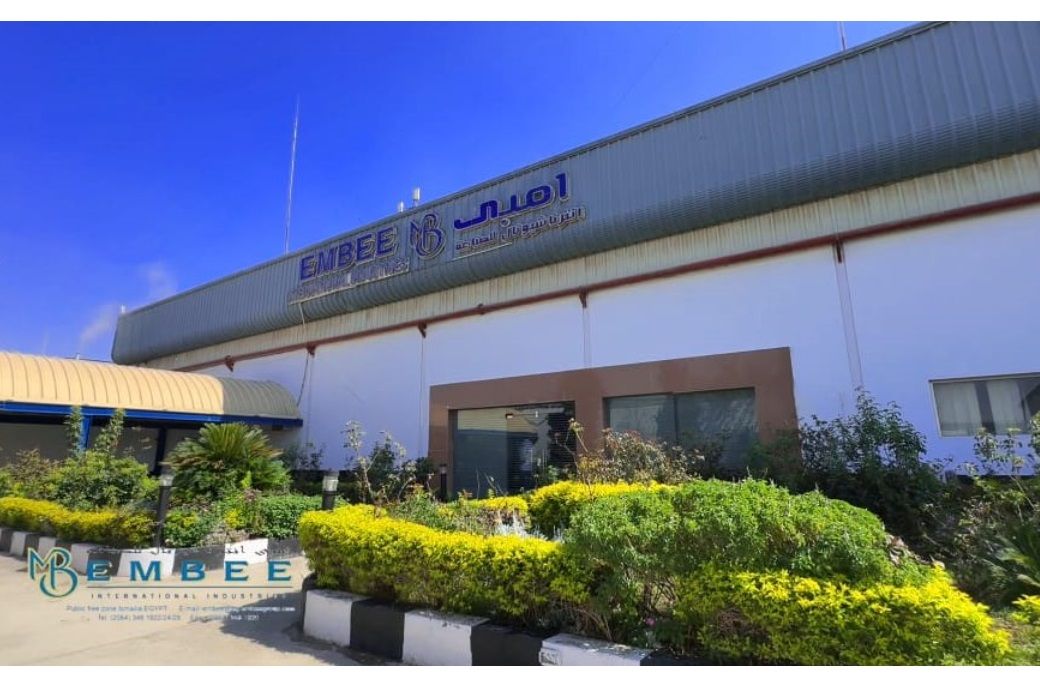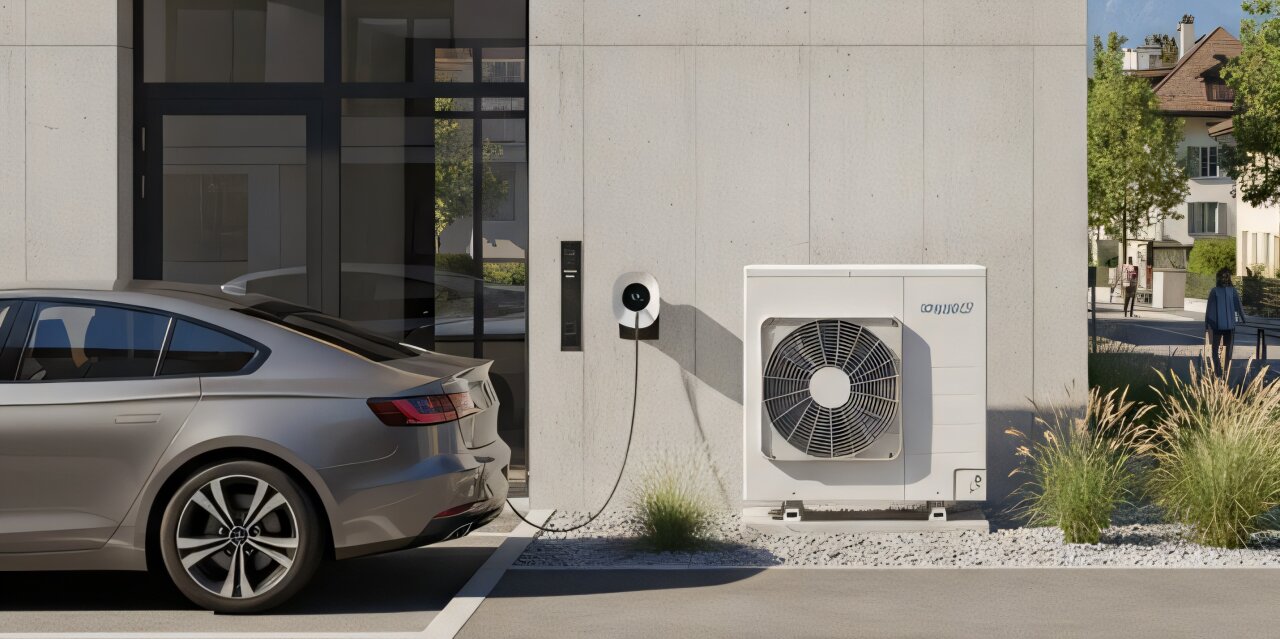Tech
Nscale explained: Everything you need to know | Computer Weekly

The UK government has set itself an ambitious target of becoming an artificial intelligence (AI) superpower, and this is a position it is seeking to secure by championing the developers of homegrown AI tools and technologies.
As the government pithily stated in its January 2025 AI opportunities action plan document: “We must be an AI maker, not just an AI taker: we need companies at the frontier that will be our UK national champions.”
One company the government certainly seems to be championing to fill that role is AI infrastructure provider Nscale, which has previously described itself as the UK’s “only full stack sovereign AI infrastructure provider”.
Since the start of 2025, the company has received passing mentions in various ministerial speeches, building up to its CEO, Josh Payne, being quoted in press releases issued by the Department for Science, Innovation and Technology (DSIT) about the government’s ambitious AI agenda.
On 16 September 2025, the company was name-checked as “British firm Nscale” in two government press releases – one detailing its work with ChatGPT creator OpenAI to create sovereign AI compute capacity, and another about its involvement in Microsoft’s bid to create the UK’s largest AI supercomputer in Loughton, Essex.
For a company that was, according to Companies House, only incorporated in May 2024, the calibre of its technology collaborators and the high regard the government appears to hold it in is curious to say the least.
Especially the latter’s trumpeting of the company as a British tech success story, given – as confirmed by Companies House – the majority of its directors are based in the US, and the bulk of its built datacentre infrastructure is in Norway.
So, where did Nscale come from? And why is the government so sure its technology holds the key to it becoming an AI maker, rather than an AI taker?
What is the background to Nscale?
Nscale was incorporated in the UK on 29 May 2024, with Companies House confirming the company has seven directors, with four of them residing in the US, two in the UK and one in Australia.
Among the UK directors is the company’s chief executive Payne, who is also the only director listed as being a person of “significant control”.
Nscale is understood to have been spun out of a company founded by Payne and another individual – Nathan Townsend, also a director at Nscale – called Arkon Energy, which specialises in the provision of cryptocurrency mining and renewably powered datacentre infrastructure from sites in Ohio, the US and Norway.
In December 2023, Payne posted on LinkedIn that Arkon Energy had secured $110m in funding, which he declared to be the “largest private funding round for a bitcoin mining platform” that year.
The post stated that the funding will be used to triple the company’s US-based datacentre capacity to 300MW, and pave the way for it to launch its AI Cloud Service platform from its existing datacentre in Norway.
“It has been an amazing year for Arkon Energy, having started the year with an operating capacity of 30MW and now ending the year with a portfolio of 330MW in total that is funded, [and] expected to be fully operational by Q3 2024,” wrote Payne.
Several months later, in February 2024, there was an abortive attempt started to get Arkon Energy listed on the Euronext Amsterdam Stock Exchange via a reverse merger with a shell company known as BM3EAC.
However, nine months later, in November 2024, it was confirmed that both companies had terminated discussions on the matter, and – during the intervening period – Nscale was spun out of Arkon.
Townsend is still listed as working for Arkon Energy (and Nscale) on his LinkedIn profile, but the Arkon Energy website appears to have disappeared from the internet altogether.
What does Nscale actually do?
Nscale markets itself as an AI hyperscaler that provides the datacentres, software and applications that enterprises and governments need to deliver on their own AI ambitions.
The company has its flagship Glomfjord datacentre in Norway, which is reportedly powered by hydroelectricity, and claims to have a “global pipeline of greenfield datacentres” under development.
Does Nscale have any UK datacentres?
The company announced in January 2025 that it planned to invest $2.5bn in the UK datacentre industry over the next three years, having purchased its first UK site in Loughton.
Nscale said the site is equipped with 50MW of AI and high-performance compute capacity, which could be scaled up to 90MW, and should be live by late 2026. The company said it also plans to start building multiple modular datacentres in the UK, during the second half of 2025.
What about its partnerships and acquisitions?
Since its inception, the company has hit the acquisition trail to build out the capabilities of its AI infrastructure proposition, having snapped up Kontena, which specialises in the provision of high-density, modular generative AI datacentres, in July 2024.
It has also struck a few high-profile partnerships, including with OpenAI. It is collaborating with the company on its Stargate Norway initiative, which will see it help deliver 290MW of renewably powered compute capacity in the country, as announced in August 2025.
The company is also working with OpenAI and Nvidia in the UK on Stargate UK, as part of a government-backed push to build out the sovereign compute capacity for the sole purpose of hosting AI models.
As previously mentioned, the company is also involved in Microsoft’s bid to create the UK’s largest AI supercomputer in Loughton.
What has the UK government said about Nscale?
Quite a bit, as it goes. The company has been name-checked in ministerial speeches and DSIT press releases a fair amount since the government published its AI opportunities action plan document on 13 January 2025.
On that day, Nscale was described in a government press release as “one of the UK’s leading AI companies”, which is a bold claim for a company that – at that point – had only been in operation around eight months.
Exactly what information this descriptor was based on is unclear, given the company was – as confirmed by Companies House – still eight months shy of having to submit its first set of accounts at that point, which would give a clearer idea of its performance.
In another DSIT press release, released two days after the AI opportunities action plan report materialised in January 2025, Nscale is described by the government as “one of our leading home-grown success stories”.
Again, the “home-grown” descriptor is one that warrants closer examination, given that the majority of its directors are located overseas, the bulk of its infrastructure appears to be located in Norway, and the company it span out from was founded in Australia.
While Nscale was incorporated in the UK in May 2024, a profile on the company published around this time on overseas tech site IT Brief Australia also describes the company as being Norwegian.
The company does have a headquarters in the UK, and confirmed on 2 September 2025 that it is opening an office in Mayfair, London.
How is Nscale being funded?
In December 2024, Nscale announced it had raised $155m on the back of an “oversubscribed” series A funding round, which it claimed would allow it to accelerate the company’s expansion across Europe and North America.
Some 12 months before this, in December 2023, the company is understood to have also raised $30m in seed funding.
“Since launching from stealth in May 2024, Nscale has experienced insatiable demand for AI infrastructure, quickly growing its pipeline of greenfield datacentres across Europe and North America from 300MW to 1.3GW, with 120MW planned for 2025 development,” said the company, in the accompanying press release.
“The hyperscaler [Nscale] is now uniquely positioned to capitalise on the market for large-scale AI infrastructure, and can deliver bespoke GPU [graphics processing unit] clusters at any scale for governments, AI scaleups and global enterprises.”
Tech
Embee International adopts Coats Digital’s GSDCost Solution

Coats Digital is pleased to announce that leading global apparel manufacturer, Embee International Industries, has implemented Coats Digital’s GSDCost solution across its operations to eliminate inaccurate costing, streamline production processes, and boost competitiveness in international markets. The move forms a key part of Embee International’s digital transformation strategy to drive greater efficiency, improve quality, and strengthen partnerships with its portfolio of top global brands.
Embee International, a leading Egyptian apparel manufacturer, has adopted Coats Digital’s GSDCost solution to standardise work methods, ensure accurate labour costing, and boost efficiency.
The move eliminates manual costing errors, enhances production visibility, and supports its digital transformation to strengthen global competitiveness.
Headquartered in Ismailia, Egypt, with additional facilities in Suez, Port Said, and Alexandria, Embee International employs more than 12,000 people. The company operates 4,800 sewing machines across 134 sewing lines and produces approximately four million units per month. Its diverse product range includes outer jackets, trousers, chinos, denim pants, shorts, leggings, underwear, tees, polos, shirts, and soft-shell jackets.
As a trusted supplier to brands such as Decathlon, Fruit of the Loom, LC Waikiki, Walmart, Calvin Klein, Skechers, Lee Wrangler, New Yorkers, and Defacto, Embee International is committed to operational excellence, ethical manufacturing, and sustainable growth.
Prior to adopting GSDCost, Embee International relied on manual time studies using stopwatches and inconsistent measurement methods. This led to inaccurate Standard Minute Values (SMVs), incorrect costings, unrealistic production targets, lengthy negotiations with buyers, and inefficient line balancing. It also faced high production costs due to non-standardised work methods, inconsistent quality from variations in operator techniques, frequent bottlenecks and missed delivery deadlines caused by poor production visibility.
Sherwin Ricky Jonas, Head-Industrial Engineering & CI said: “GSDCost delivers a clear, data-driven view of our production processes, allowing us to measure performance accurately, standardise work methods, and optimise resource utilisation. By enhancing workforce efficiency while upholding quality and compliance standards, it fosters seamless interdepartmental coordination, streamlines operations, and drives continuous improvement through informed decision-making.”
With GSDCost, Embee International can now produce precise, data-backed labour costings that improve buyer negotiations and optimise operator methods to reduce SMVs and increase efficiency. The company is building a robust digital SMV library to accelerate new style costing and planning while improving production visibility and line balancing. This transformation is enabling Embee International to create a more agile, scalable operation capable of meeting the fast-paced demands of the global apparel market and supporting long-term growth.
Diaa Hasham, Digital Manager, Sales, Coats Digital, added: “Embee International is a leading force in global apparel manufacturing, and we are thrilled that such a prestigious company has chosen Coats Digital’s GSDCost solution to drive its digital transformation. By optimising production processes through proven, scientific methods, Embee International is strengthening the resilience and efficiency of its operations. In a market where brands demand closer collaboration with fully digitised supply chain partners, GSDCost provides a common language for manufacturers and brands alike, helping to meet cost, quality, and delivery targets while promoting sustainable and ethical practices. We look forward to supporting Embee International throughout its digital transformation journey, so it continues to benefit from improved efficiencies, enhanced profitability, and a stronger position in the global apparel industry.”
Note: The headline, insights, and image of this press release may have been refined by the Fibre2Fashion staff; the rest of the content remains unchanged.
Fibre2Fashion News Desk (HU)
Tech
How electric cars and heat pumps can help Switzerland implement its energy strategy

In the future, flexibly operated heat pumps and electric cars could reduce both electricity imports and electricity prices. That is according to a new study by a Swiss research consortium led by ETH Zurich.
Electric cars and heat pumps could play a major role when it comes to implementing the Swiss Energy Strategy. The Federal Council is aiming for Switzerland’s energy supply to be carbon-neutral by 2050. The plan is for heat pumps to replace oil and gas-fired heating systems and for electric cars to gradually replace combustion vehicles. This will result in a significant increase in demand for electricity—from around 56 terawatt-hours (TWh) a year today to around 75 TWh a year by 2050.
A new report by the Swiss “PATHFNDR” research consortium, which is part of the “SWEET” program, has now shown that, alongside hydropower, heat pumps and electric cars could be key providers of flexibility for the Swiss power system in 2050.
Christian Schaffner, Director of the Energy Science Center at ETH Zurich and Deputy Director of the project, explains, “The two technologies serve to better coordinate rising electricity consumption with electricity production from renewable energy sources. This relieves the burden on the power grid, reduces imports and brings down wholesale electricity prices—particularly in the winter months.”
Only consume if the grid is not at full capacity
This flexibility is apparent on an everyday basis. For example, at outdoor temperatures of 0°C, intelligently controlled heat pumps can switch off for up to 10 hours in buildings meeting the Minergie standard without a noticeable drop in room temperature. This helps to avoid having too many heat pumps running at the same time and overloading the grid.
Electric cars, too, are often connected to the grid for much longer than is necessary for a full charge—for example if they are plugged in to charge in the garage at the end of the working day. This allows for an optimum charging pattern that is in line with electricity supply. The study claims that the best thing would be to charge the car at work: “During the day, when the sun is shining, many vehicles are parked anyway. Charging them there would make optimum use of photovoltaic production,” explains Siobhan Powell, an energy researcher at ETH Zurich and one of the main authors of the study.
More electricity, less electricity imports
By 2050, Switzerland wants to cover 50 to 60% of its electricity demand (45 TWh per year) with new renewable energy sources such as photovoltaics, wind energy or biomass. The researchers’ model calculations now show that this target will be easier to reach thanks to the flexible power consumption of heat pumps and electric vehicles.
If heat pumps and electric cars are coordinated and controlled flexibly on a nationwide basis, around 4% more renewable electricity could be available in Switzerland in 2050. “Most of this is solar power in spring and summer, which would be utilized more efficiently so that it does not need to be curtailed,” explains Powell.
Moreover, flexible heat pumps and electric cars could reduce net electricity imports by around 20% across the whole year, particularly due to higher net exports in spring and summer. “These amount to some 1.8 TWh of electricity, which is equivalent to the annual consumption of around 0.5 million Swiss households,” says Powell. According to the study, Switzerland’s electricity imports would also be reduced by around 0.7 TWh in the winter months. That corresponds to a 4.4% reduction in net imports in winter compared to an energy system without flexibly operated heat pumps and electric cars.
Cheaper electricity and fewer gas power stations
In addition, the study shows that wholesale electricity prices could also be lower due to a more even distribution of supply and demand with the help of flexible heat pumps and electric cars. This reduction in electricity prices is greatest in the winter months of January to March, when wholesale prices could be reduced by up to 6%.
The researchers also estimate that an electricity system supported by flexible heat pumps and electric cars could be operated with around 4% lower costs than a system without these two flexibility providers.
Moreover, the use of flexibly operated heat pumps and electric cars would also mean the construction of fewer gas power stations and battery storage systems by 2050. Estimates show that the necessary investment in gas power stations and batteries would fall by around a third. “Above all, gas power stations and batteries are necessary to compensate for peaks in electricity demand. If electric vehicles and heat pumps take over this function, we’ll need fewer of them,” explains Powell.
Flexibility yes, but also convenience
According to a representative survey carried out as part of the study, about 70% of the Swiss population is willing to contribute to grid stability through flexible heating and charging, provided their convenience is not impacted and operation is automatic. About 30% of respondents even said they would accept minor inconveniences if this would bring down their electricity costs.
Lower peak loads in neighborhoods and reduced grid expansion
If a large number of households are charging their cars or running their heat pumps at the same time, there is a risk of bottlenecks in the distribution grid. Many of today’s power cables and transformers are not designed for these loads and would need to be reinforced.
The researchers analyzed about 50 grid areas in Switzerland and concluded that flexibly operated heat pumps and electric cars would reduce peak loads in neighborhoods and could therefore delay and reduce the need for expensive reinforcement work on distribution grids. The actual size of these effects also depends on whether the areas in question are urban or rural.
Electricity tariffs that reward citizens
So that electrical vehicles and heat pumps can actually act as flexibility providers by 2050, they must be equipped with the necessary control and communication technology. At present, this is not the case across the board. The authors of the study therefore recommend that further systems only be subsidized if they allow flexible and intelligent operation.
In addition, the operators of electric vehicles and heat pumps should be incentivized to change their heating and charging behavior. To this end, the study recommends measures including dynamic electricity tariffs that reward flexible charging and heating. However, significant local differences in tariffs and feed-in payments would hinder this measure’s implementation in Switzerland, states the study.
The researchers also point out that the promotional instruments in Switzerland are very heterogeneous and that there is, as yet, no national “right to charge” for tenants with electric vehicles—something they say ought to be resolved quickly.
More information:
Flexibility provision from electromobility and buildings – Synthesis Report (2025). DOI: 10.3929/ethz-c-000787060
Citation:
How electric cars and heat pumps can help Switzerland implement its energy strategy (2025, November 11)
retrieved 11 November 2025
from https://techxplore.com/news/2025-11-electric-cars-switzerland-energy-strategy.html
This document is subject to copyright. Apart from any fair dealing for the purpose of private study or research, no
part may be reproduced without the written permission. The content is provided for information purposes only.
Tech
New algorithm enhances Doppler resolution of unmanned vehicle radars

A research team has developed an extrapolation-based Doppler resolution enhancement algorithm for frequency modulated continuous wave radars. The algorithm improves system performance, offering an advancement that is superior to existing ultra-high-resolution technologies.
The findings are published in the Journal of Electrical Engineering & Technology. The team was led by Sang-dong Kim and Bong-seok Kim, affiliated with the DGIST Division of Mobility Technology, in collaboration with a team led by Professor Youngdoo Choi, affiliated with the Republic of Korea Naval Academy (ROKNA).
Improving radar accuracy without extra hardware
This research introduces a technology that improves radar detection accuracy without the need for additional complex computations or hardware. The technology is expected to contribute to enhancing radar system performance on various intelligent unmanned platforms such as unmanned aerial vehicles (UAVs), unmanned ships, and autonomous vehicles.
Conventional radar systems analyze the Doppler effect to determine the velocity of a target, but the fast Fourier transform (FFT)-based approach has limitations regarding resolution (i.e., the accuracy of velocity discrimination). To address this, the joint DGIST–ROKNA research team applied a signal extrapolation technique and has proposed a new algorithm that enhances Doppler resolution without extending observation time.
Performance gains and real-world applications
The proposed method successfully reduces the root mean square error of velocity estimation by up to 33% and decreases the target miss rate by up to 68%, representing a substantial improvement over the conventional approach. Notably, the proposed method maintains the same computational complexity level as the conventional FFT method, thereby simultaneously achieving fast processing speed and high efficiency.
This technology can effectively solve the problem of signal overlap between targets moving at similar velocities, particularly when UAVs or radar systems detect multiple objects simultaneously. It can therefore greatly enhance the ability to distinguish closely spaced targets and improve detection accuracy, marking a new milestone in the advancement of high-resolution target detection technology.
Additionally, the technology is highly regarded for its industrial applicability because it requires no additional hardware resources and features a simple computational structure that enables real-time implementation.
Sang-dong Kim, principal researcher at the Division of Mobility Technology (concurrently serving the interdisciplinary engineering major), said, “This study demonstrates an improvement in both the efficiency and precision of radar signal processing, enabling more accurate target detection without the need for additional equipment. It is expected to evolve into a key technology for defense, autonomous driving, and unmanned systems.”
More information:
Youngdoo Choi et al, Doppler Resolution Enhancement Algorithm Based on Extrapolation for FMCW Radar, Journal of Electrical Engineering & Technology (2025). DOI: 10.1007/s42835-025-02453-6
Citation:
New algorithm enhances Doppler resolution of unmanned vehicle radars (2025, November 11)
retrieved 11 November 2025
from https://techxplore.com/news/2025-11-algorithm-doppler-resolution-unmanned-vehicle.html
This document is subject to copyright. Apart from any fair dealing for the purpose of private study or research, no
part may be reproduced without the written permission. The content is provided for information purposes only.
-

 Tech1 week ago
Tech1 week agoCISOs in court: Balancing cyber resilience and legal accountability | Computer Weekly
-

 Fashion1 week ago
Fashion1 week agoCoach reconnects with Bank & Vogue for upcycled bags using corduroy
-

 Business1 week ago
Business1 week agoFirst new Amazon electric heavy goods vehicles hit UK roads
-

 Tech1 week ago
Tech1 week agoThe Security Interviews: Colin Mahony, CEO, Recorded Future | Computer Weekly
-

 Fashion1 week ago
Fashion1 week agoGermany’s Adidas achieves highest-ever quarterly sales in Q3 2025
-

 Sports1 week ago
Sports1 week agoSources: QB Daniels dislocated elbow in loss
-

 Business1 week ago
Business1 week agoIndia, New Zealand Hold 4th FTA Talks In Auckland On Trade Rules
-

 Tech1 week ago
Tech1 week agoNokia, Rohde & Schwarz collaborate on AI-powered 6G receiver | Computer Weekly






